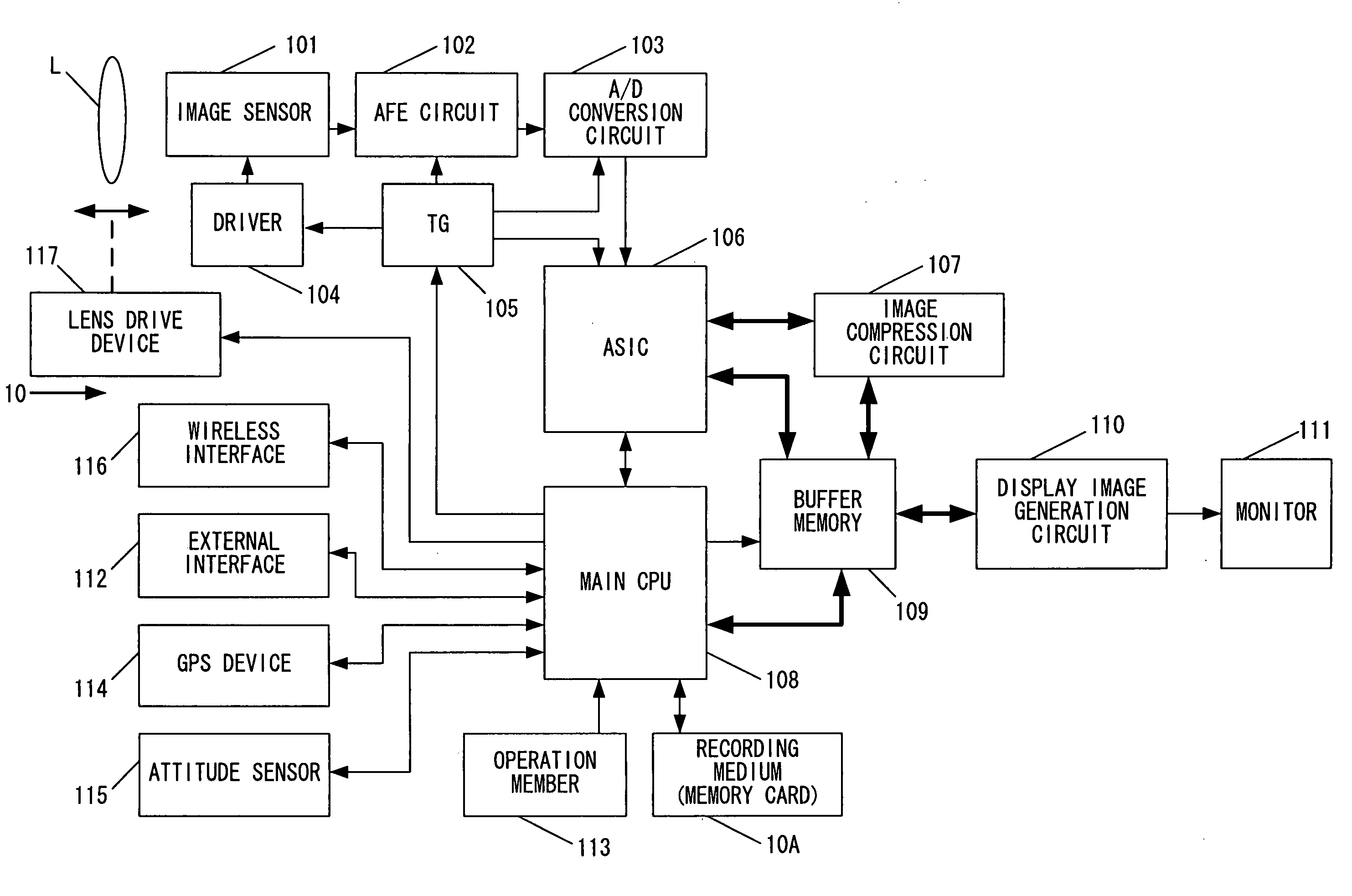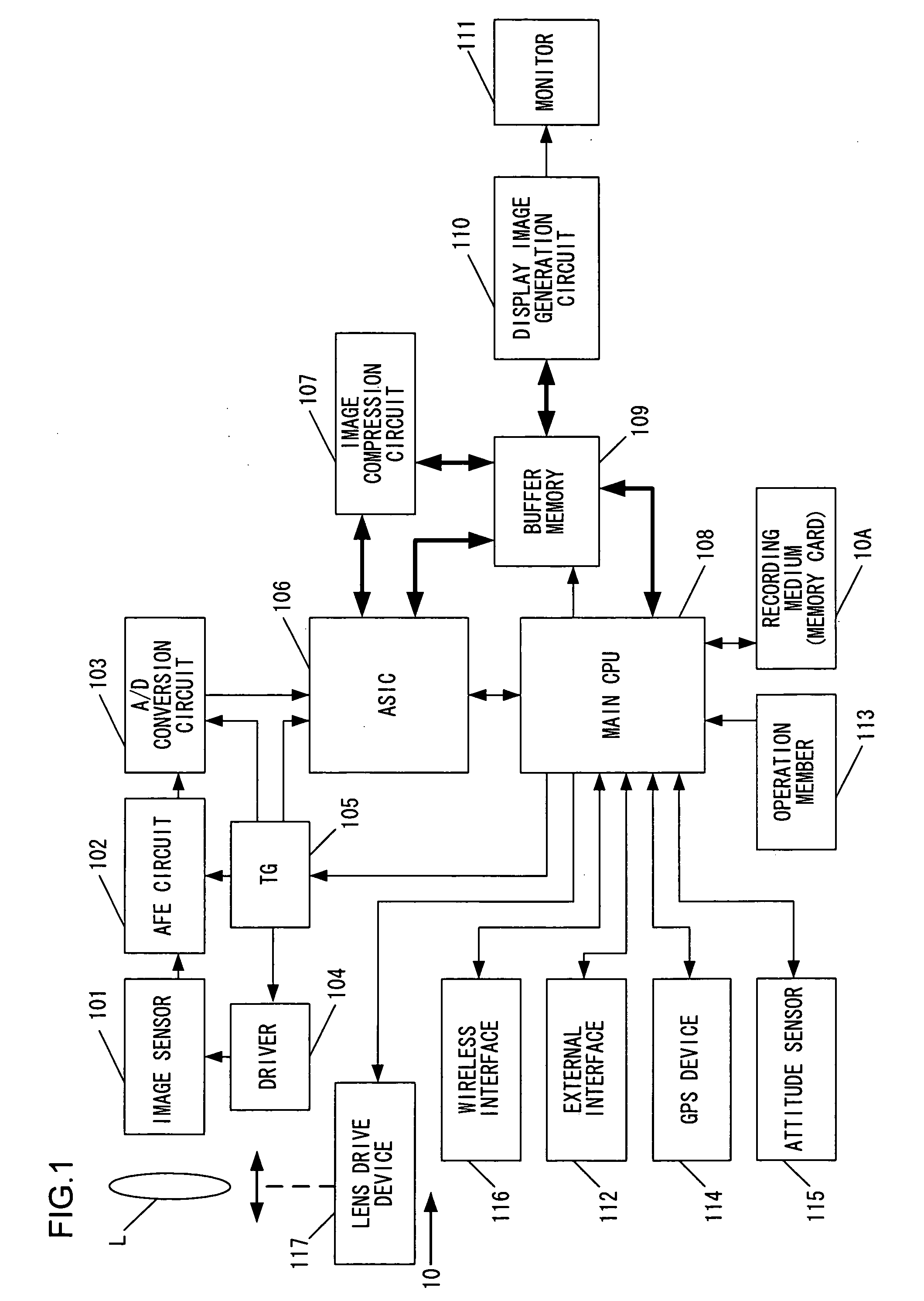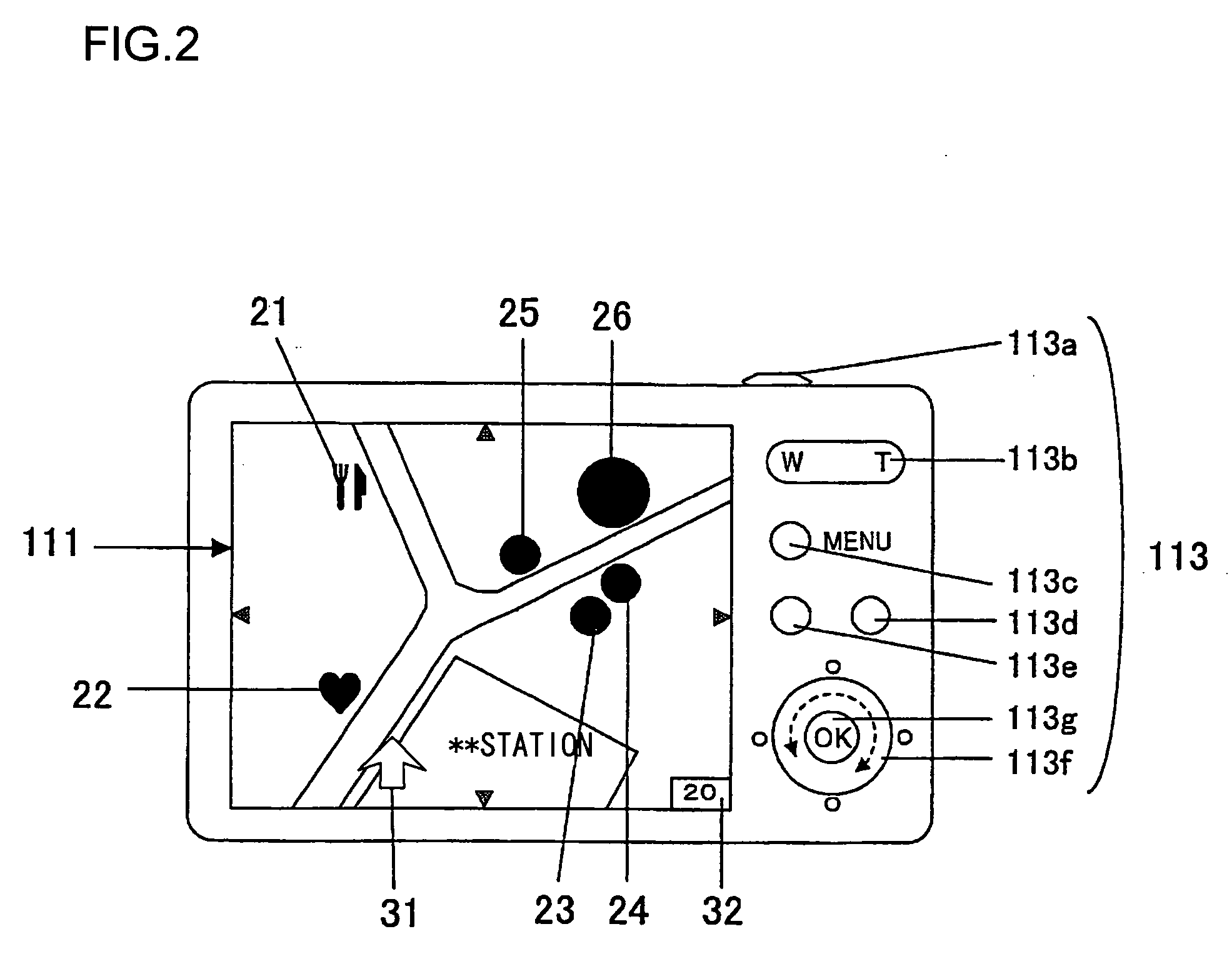Electronic apparatus and electronic camera
- Summary
- Abstract
- Description
- Claims
- Application Information
AI Technical Summary
Benefits of technology
Problems solved by technology
Method used
Image
Examples
first embodiment
[0059]FIG. 1 is a block diagram of the essential structure adopted in an electronic camera 10 achieved in the first embodiment of the present invention. A timing generator (TG) 105 in FIG. 1 provides timing signals to a driver 104, an AFE (analog front end) circuit 102, an A / D conversion circuit 103 and an image processing circuit 106 in response to an instruction output from a main CPU 108. The driver 104 provides a drive signal for an image sensor 101.
[0060]A photographic lens L forms a subject image on an imaging surface of the image sensor 101. The image sensor 101, which may be constituted with a CCD image sensor or the like equipped with a plurality of photoelectric conversion elements each corresponding to a pixel, captures the subject image formed on the imaging surface and outputs photoelectric conversion signals corresponding to the brightness of the subject image. R (red), G (green) and B (blue) color filters are disposed at the imaging surface of the image sensor 101 so ...
second embodiment
[0156]The second embodiment of the present invention is now described. The following explanation focuses on the difference from the first embodiment, with the same reference numerals assigned to components identical to those in the first embodiment, to preclude the necessity for a repeated explanation. In other words, unless a given component is particularly noted, it is identical to the corresponding component in the first embodiment. The second embodiment enables adjustment of the display magnification factor at which the reproduced image is displayed.
[0157]FIG. 7 presents an example of an image that may be brought up on display at the liquid crystal monitor 111 through the processing executed in step S19 (see FIG. 5). The main CPU 108 may switch the display contents as described below. Namely, as the switch 113d is operated while the full-screen display of a reproduced image is up at the liquid crystal monitor 111, the main CPU 108 switches from the full screen display in FIG. 7 ...
third embodiment
[0166]The third embodiment of the present invention is now described. The following explanation focuses on the difference from the first and second embodiments, with the same reference numerals assigned to components identical to those in the first and second embodiments, to preclude the necessity for a repeated explanation. In other words, unless a given component is particularly noted, it is identical to the corresponding component in the first and second embodiments. In reference to the third embodiment, the concepts of variations 2, 3 and 4 are described in further detail.
[0167]FIG. 11 presents an example of a setting menu screen that may be brought up on display at the liquid crystal monitor 11 by the main CPU 108 in response to an operation of the menu switch 113c. In response to a rotation operation signal output from the dial 113f, the main CPU 108 switches the selected option and as the OK switch 113g is operated, the main CPU displays at the liquid crystal monitor 111 a me...
PUM
 Login to View More
Login to View More Abstract
Description
Claims
Application Information
 Login to View More
Login to View More - R&D
- Intellectual Property
- Life Sciences
- Materials
- Tech Scout
- Unparalleled Data Quality
- Higher Quality Content
- 60% Fewer Hallucinations
Browse by: Latest US Patents, China's latest patents, Technical Efficacy Thesaurus, Application Domain, Technology Topic, Popular Technical Reports.
© 2025 PatSnap. All rights reserved.Legal|Privacy policy|Modern Slavery Act Transparency Statement|Sitemap|About US| Contact US: help@patsnap.com



